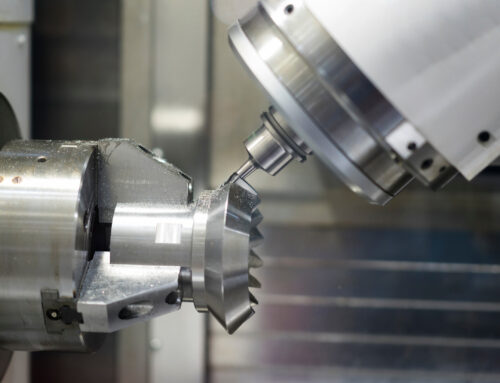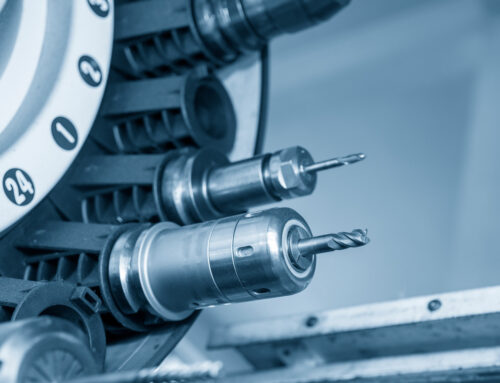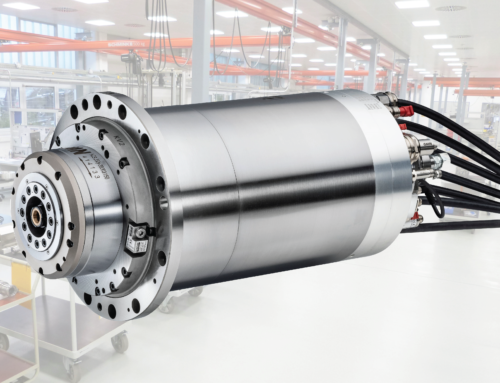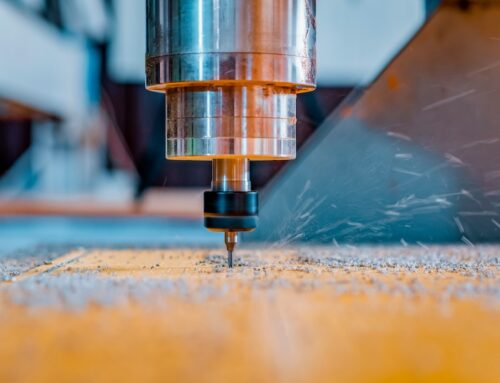CNC Spindles: An Inside Look at What Makes a Quality Spindle

In the world of machinery, CNC spindles serve as the pillar for operations across many industries, especially when it comes to CNC machines, milling machines, and lathes. High-quality CNC spindles can be found where precision and reliability are non-negotiable, like aerospace or medical technology. Due to the nature of a spindle work environment, the smallest imperfection in the quality and performance could result in costly results, even leading to catastrophic disasters. This makes high-quality spindles a required component in many machines, ensuring a smooth, reliable manufacturing process.
The 4 Essential CNC Spindle Components
A CNC spindle is a rotating axis that holds tools, providing precision and accuracy when performing machining tasks. There are five main components to CNC spindles: a High frequency motor, bearings, a clamping system, a chiller, and a lubricator.
Spindle Drives: The Heart of Spindle Components
At the core of the system is a high frequency motor. The main body and housing materials of these motors are usually made from high-grade steel or aluminum alloys. They provide the strength to resist wear and tear, which is necessary for withstanding the high speed and substantial forces exerted during machining operations.
Precision Bearings for Smooth Operation
Behind the operation, bearings are the unsung heroes of a spindle system. They provide smooth operation of CNC spindles, which is directly impacted by the bearing types and quality. High-quality bearings provide precision to reduce friction, minimize wear, and improve the spindle’s ability to maintain a tight tolerance, making sure the machining accuracy is consistent.
Clamping System
Besides drives and bearings, we also need something to secure the cutting tools to further complete a CNC spindle. That’s where the clamping system comes into play. When engineered with precision in mind, tool holders can reduce runout and vibrations, resulting in improved machining quality. Similar to the flexibility of a skilled craftsman, the tool holder can interface various tool types with easy interchangeability. This ability allows CNC spindles to adapt to different machining tasks while retaining a high level of accuracy.
Chillers
A spindle’s life span heavily depends on its ability to be cooled properly. A high-quality chiller is essential for this task. Maintaining a stable temperature of plus or minus 2° Kelvin ensures the motor can operate at peak performance. It also gives the end user the ability to maintain tighter tolerances and achieve greater surface finishes.
In a CNC machine, it is important to isolate the cooling of the spindle from the cooling of the rest of the machine. That is why GMN USA always supplies high-quality application chillers that will be used with spindles only. This type of system severely extends the life out of the spindle and lowers the chances of damaged components due to contamination within the cooling circuit.
Lubricators
One of the most crucial factors of a properly running spindle is the quality of the lubrication system. It is vital to supply clean/dry air with accurate and consistent oil to the rolling elements.
With GMN USA PRELUB Oil/Air lubricators, spindles can reach higher speeds than ever before! Similar to Oil-mist lubricators; Oil/Air lubricators supply a steady stream of air, but with a minimal and consistent flow of oil to the bearings. Without proper lubrication, the spindle will fail catastrophically! These lubricators have built-in switches to disable the machine in case there is any fault with the lubrication system.
Manufacturing Processes
The manufacturing process of high-quality CNC spindles requires high-precision lathes and CNC machines to create tight tolerances and excellent surface finishes. These techniques are employed to create the perfect fitment for each component, largely contributing to the overall performance and reliability of the CNC spindle.
To add another layer of excellence, surface treatments are applied to spindle components. Some surface coatings include nitriding or hard chrome plating, which provides a hard, wear-resistant surface to lower friction and changes in corrosion.
Throughout the entire manufacturing process, quality control measures are applied at every step. This includes inspecting dimensions, testing materials, and evaluating performances. Every spindle must pass these tests to ensure they meet the highest standards, guaranteeing reliability and consistency.
Curious how this process is done at GMN USA? Get a behind the scenes look at how we ensure spindles run consistently and always achieve excellent performance values.
Design Considerations
Dynamic balancing is always done for high-speed CNC spindles to eliminate vibration. To achieve this, precision balancing techniques and vibration control mechanisms are used. When vibration is properly controlled, it can reduce wear and extend the spindle’s lifespan.
As mentioned previously, CNC spindles must be designed with tool compatibility in mind. This includes considerations for interface dimensions, tool holding systems, and integration with existing machines. The key to designing high-quality CNC spindles is versatility and adaptability, allowing them to cover the needs of various industries.
Performance Metrics
The speed and torque of CNC spindles are two of the most critical metrics for performance measurements. High-speed CNC spindles are designed for faster machining operations while high torque allows it to handle heavy-duty cutting loads.
Thermal stability and heat dissipation capabilities are also important for maintaining CNC spindle performance. To ensure accuracy and consistency, spindles are designed with a cooling system, plus materials that minimize thermal expansion. Effective heat dissipation is important because overheating often leads to damage, resulting in reduced spindle life.
High-quality spindles often present themselves with low noise levels and smooth operations. Components contribute to quiet and efficient performance when engineered with precision and properly lubricated. Low noise operations often show a machine is running efficiently with a high rate of energy transfer, in comparison to energy wasted when unintentionally converting to acoustic energy.
We offer high-performance spindles in both automatic and manual tool-changing models. Have something else in mind? Reach out about our custom-engineered spindles tailored to your specific needs.
Ensuring Grinding Spindle Reliability and Longevity
Many factors can impact the lifespan of a grinding spindle, such as quality of material, manufacturing precision, and maintenance practices. Long lifespans are usually a sign of high-quality materials put through precision engineering.
Regular maintenance and proper use can also extend the spindle’s operational life. This includes routine inspections, lubrication, and timely replacement of worn components.
GMN USA provides warranty and support services for their spindles. These services include technical support, repair services, and replacement parts. Having access to reliable support ensures that any issues can be promptly addressed, minimizing downtime, and maintaining productivity. Warranty coverage also provides peace of mind, knowing that the CNC spindle is protected against manufacturing defects.
At GMN USA, the journey to creating a high-quality CNC spindle involves a blend of robust design, precision engineering, and meticulous care. Each element, from structural integrity and advanced machining techniques to diligent maintenance and supportive warranties, plays a crucial role in ensuring optimal performance and longevity.
With the help of GMN spindles, manufacturers can achieve the highest standards of precision and reliability, enhancing their machining capabilities and operational efficiency.




